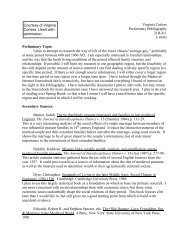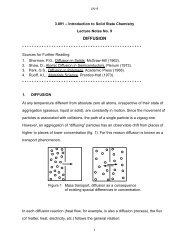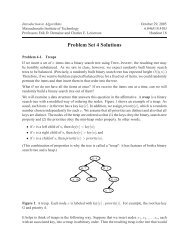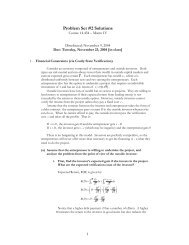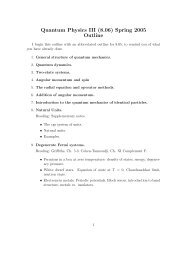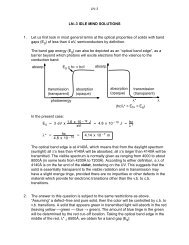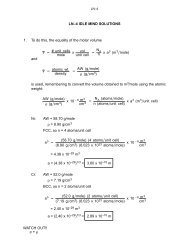3.091 â Introduction to Solid State Chemistry Lecture Notes No. 2 ...
3.091 â Introduction to Solid State Chemistry Lecture Notes No. 2 ...
3.091 â Introduction to Solid State Chemistry Lecture Notes No. 2 ...
- No tags were found...
Create successful ePaper yourself
Turn your PDF publications into a flip-book with our unique Google optimized e-Paper software.
LN–2The energetics associated with ionic bond formation may be determined quantitativelyby considering the energy changes associated with the individual steps leading fromthe starting materials <strong>to</strong> the final product (Haber-Born cycle).The bond formation in NaCl may be formally presented as an electron-transfer reaction:1e–Na + Cl → Na + + Cl –The reactions involved in this process which result in the formation of 1 mole of solidsalt are:(1) Ionization of Na:Na (gas) → Na + + 1e(E.I. = +497 kJ/mole)The energy change associated with this step, energy of ionization (E.I.), is+497 kJ/mole.(2) Acquisition of one electron by Cl:Cl (gas) + 1e → Cl –(E.A. = –364 kJ/mole)The energy change associated with this step, electron affinity (E.A.), is–364 kJ/mole. The minus sign reflects an energy release, a lowering of the energystate associated with the achievement of stable rare gas configuration by chlorine.So far, the energy balance appears positive (ΔE = +133 kJ); this means the reaction isnot favored since the final products are at a higher energy state than the startingproducts. However, there are additional steps involved since:(3) Vaporization of Na:Na (metal) → Na (gas)(ΔH V = +109 kJ/mole)The energy required <strong>to</strong> transform Na (metal) in<strong>to</strong> Na (gas), the latent heat ofvaporization (ΔH V ), is 109 kJ/mole (now reaction appears even less favorable).7


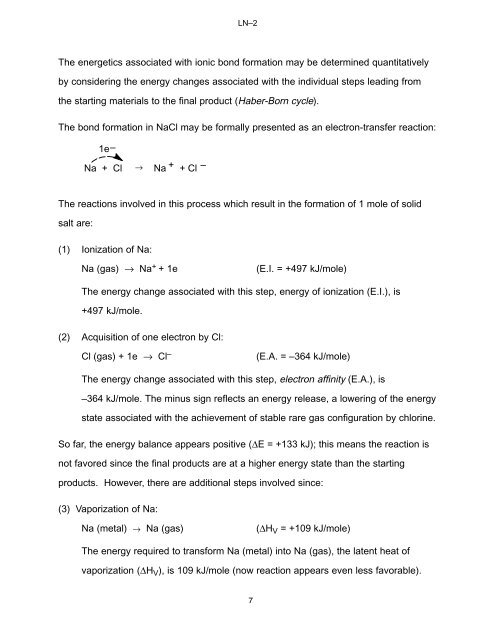
![18.03 Class 21, April 3 Fun with Fourier series [1] If f(t) is any decent ...](https://img.yumpu.com/51148985/1/190x245/1803-class-21-april-3-fun-with-fourier-series-1-if-ft-is-any-decent-.jpg?quality=85)

